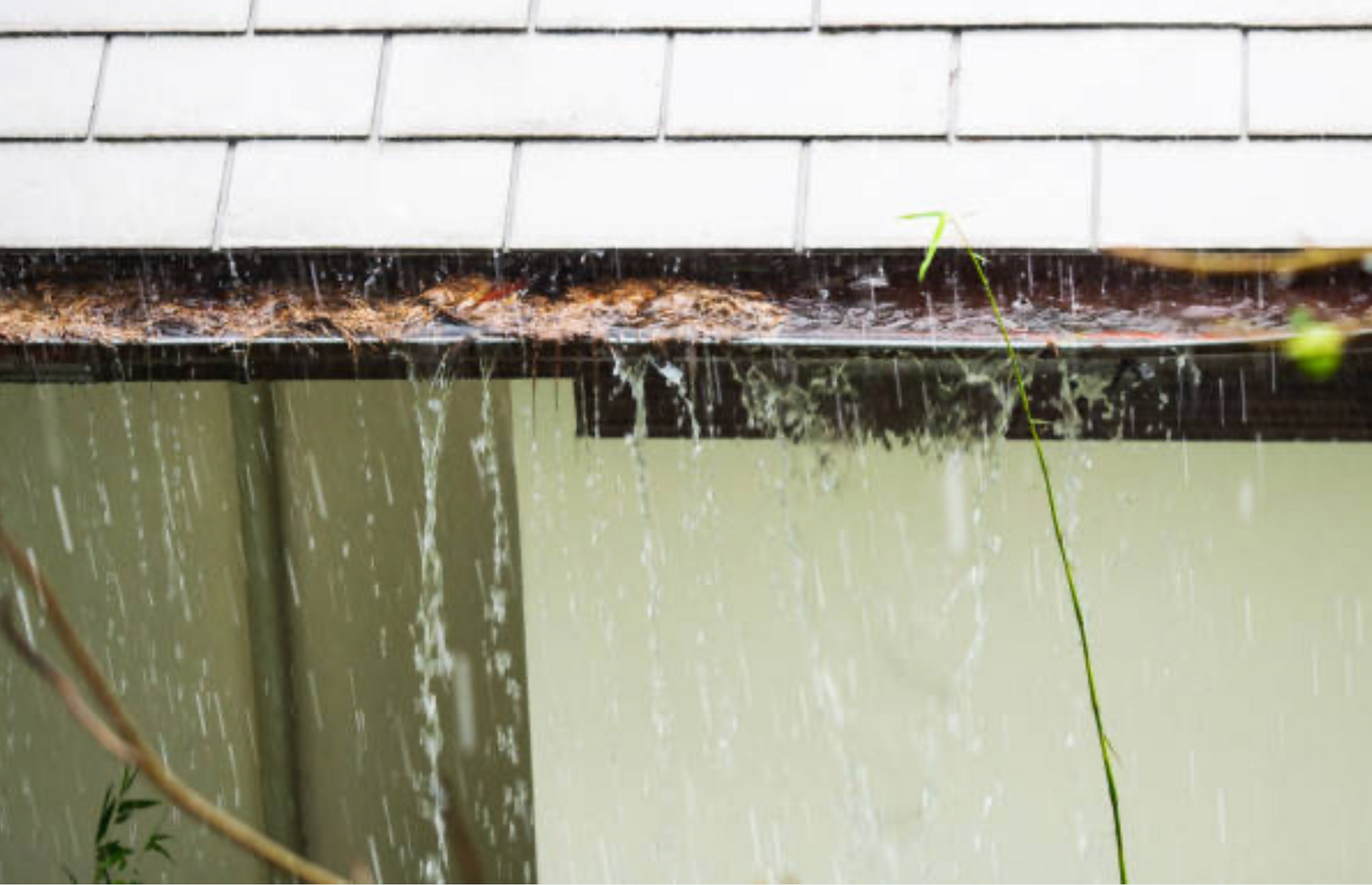Let’s start with a hard truth:
Water is sneaky.
Water is petty.
Water will find the tiniest crack in your foundation and move in like a roommate who doesn't pay rent, eats all your snacks, and ruins your hardwood floors.
You might think your home is safe — I mean, it has walls, a roof, and a nice welcome mat. But if your gutters and drainage system aren’t working properly, water doesn’t care. It will casually infiltrate your basement, buckle your driveway, and grow a petri dish of mold in your drywall like it’s auditioning for a horror film.
In this blog, we’ll dig (pun intended) into the importance of gutters and foundation drainage, and give you a step-by-step guide to check your home's defenses before Mother Nature tries to flood your castle.
🌊 The Great Moisture Menace: Why This Even Matters
Let’s get one thing straight: water + your home’s foundation = eventual disaster.
Here's what poor drainage can do:
- Cracks in foundation walls (hello structural repair bills)
- Basement leaks and the birth of new lifeforms in your carpet padding
- Mold growth that triggers allergies, lawsuits, and existential dread
- Shifting soil that causes uneven floors and doors that won’t shut (aka haunted house syndrome)
- Ruined landscaping — say goodbye to those hydrangeas you planted during your “gardening era”
And yet, so many homeowners ignore their gutters like they’re a cousin at Thanksgiving who wants to talk about NFTs.
🧠 Gutters 101: Your Home’s Unsung Hero
Think of gutters like your home’s eyebrows. They're rarely appreciated, but they do vital work keeping things tidy and controlled above the eyes (aka windows).
What gutters actually do:
- Catch rainwater from your roof and funnel it through downspouts
- Redirect that water AWAY from your home’s foundation
- Prevent erosion, splashback, mildew, and ugly foundation stains
Without gutters? Rain hits your roof, slides down like it's on a Slip ‘N Slide, and lands right by your foundation like, “Welp, hope you waterproofed.”
🚨 Common Signs You’ve Got Drainage Drama
Not sure if you have a problem? Here are the telltale red flags:
- Water pooling around your foundation after a storm
- Basement smells like a damp towel at a gym
- Cracks in basement walls or floor
- Mold or mildew near baseboards or drywall seams
- Gutter waterfalls (it looks majestic — but it’s bad)
- Downspouts that dump water right at your feet
- Your neighbor side-eyes your house every time it rains
🧪 DIY Detective Work: Step-by-Step Foundation Drainage Inspection
Put on your boots and channel your inner home inspector. Here’s how to determine if your house is losing the water battle.
🧭 Step 1: Walk the Perimeter After a Rainstorm
Time required: 15–20 minutes
Tools needed: Your eyes, decent shoes, and a bit of curiosity.
You're looking for:
- Pooled water near the foundation
- Muddy patches or erosion channels
- Splashback on siding or exposed dirt
- Water pouring behind your gutters instead of into them (gutter clog alert!)
- Downspouts that end too close to the house (they should extend at least 6 feet out)
If your house looks like it just had a bath and didn’t towel off, that’s a problem.
🏡 Step 2: Check Your Gutters (aka the Rooftop Water Slide)
Time required: 30 minutes (unless it’s a jungle up there)
Tools needed: Ladder, gloves, bucket, bravery
What to do:
- Clear out leaves, twigs, small rodents, or whatever ecosystem has set up camp in your gutters
- Ensure gutters are sloped slightly downward toward the downspouts
- Check for sagging sections or leaks during rainfall (you can do a hose test on dry days)
💡 Pro tip: If water overflows the gutter instead of going into the downspout, congratulations — you’ve discovered the world’s saddest water feature.
🧱 Step 3: Inspect the Downspouts
Time required: 10 minutes
Tools needed: None, unless you're moving extenders or piping
Check that:
- Downspouts are firmly attached
- The exit point isn’t dumping water right at the base of your house like it's offering it a drink
- Water is being directed 6 to 10 feet away from the foundation (via extenders, buried pipes, or splash blocks)
- Any downspouts that dump into the flowerbeds will likely flood the mulch like a tsunami does an island beach.
🚫 Don’t do this: Point the downspout at your driveway, unless you enjoy skating to your mailbox every winter.
🕳️ Step 4: Peek Into the Basement or Crawl Space
Time required: 15 minutes (or until your courage runs out)
Tools needed: Flashlight, possibly emotional support
Look for:
- Damp patches, discoloration, or efflorescence (that white powdery stuff on concrete)
- Musty odors (classic horror-movie scent)
- Spiders throwing pool parties
If water is showing up here, the outside is failing. Time to act.
🔎 Step 5: Check the Grading (aka the Ground’s Attitude)
Time required: 20 minutes
Tools needed: Level, shovel, tape measure (optional)
Your yard should slope away from your house, not toward it.
Rule of thumb:
The ground should fall 6 inches in the first 10 feet from your foundation.
If it slopes back toward your home? Water’s basically being given VIP access to your basement. Fix that with regrading the ground, building a retaining wall, or installing French drain.
🛠️ How to Fix Drainage Issues Without Losing Your Mind
✅ Gutters: Clean & Upgrade
- Clean twice a year (spring and fall — mark your calendar or bribe your kids)
- Consider larger 6" gutters if you get heavy rainfall
- Install gutter guards to keep out leaves, squirrels, and the occasional drone
- Replace any sagging or cracked sections
✅ Downspouts: Extend & Redirect
- Add 6–10 foot downspout extensions
- Use underground drainage if you hate the look of above-ground pipes
- Direct water toward sloped areas, dry wells, or French drains
✅ Grading: Raise the Ground Game
- Add topsoil and shape it away from the foundation
- Use compacted soil and tamp it down so it doesn’t wash away at the first drizzle
- Plant grass or ground cover to help hold it in place
- Covering fresh ground with straw will help prevent erosion.
✅ Add Drainage Solutions
- French drains: Fancy name, fantastic results
- Dry creek beds: Functional and decorative (bonus points if you toss in some river rock for that “I paid a landscaper” look)
- Sump pump: For basement-level disasters or extra insurance
- Rain barrels: Eco-friendly and makes you look like you read Mother Earth News
🏠 The ROI of Dry Foundations: Why You’ll Thank Yourself Later
Still not convinced this is worth your time? Let’s talk about what dry foundations get you:
🔐 Peace of Mind:
Sleep better knowing your foundation isn’t eroding like a cookie in milk.
💰 Increased Home Value:
Savvy buyers will check for moisture. Bonus points if you show off fresh gutters like a badge of honor.
🧼 Fewer Repairs:
Water damage is like glitter — it spreads everywhere and is stupidly expensive to remove.
🌳 Better Landscaping:
No more mulch rivers or drowned flower beds. Your plants will finally thrive like you imagined when you bought them.
😌 Less Mold, Less Drama:
Because nothing ruins a weekend like ripping out drywall because of "that smell."
📝 TL;DR — The Quick Checklist
Before we wrap this watery wisdom up, here’s a quick recap:
✅ Clean your gutters (yes, even that weird corner over the garage)
✅ Extend your downspouts at least 6 feet from the house
✅ Check for ponding around the foundation
✅ Inspect basement or crawl space for moisture
✅ Ensure your yard slopes away from your house
✅ Consider professional help if your soil has more attitude than slope
Final Thoughts: Protect the Castle, Rain or Shine
Your home is your sanctuary — your haven of peace, your weekend project playground, your castle of safety. But none of that feels secure when water decides to go all "Home Invasion: Moist Edition."
Taking care of your gutters and managing water drainage isn’t glamorous. No one’s going to compliment you at brunch for having "excellent grading practices." But trust us — when the next storm rolls in and your basement stays bone dry, you’ll be the real MVP.
And hey — you’ll have earned that smug little smile while your neighbor Steve frantically bails out his crawl space.

